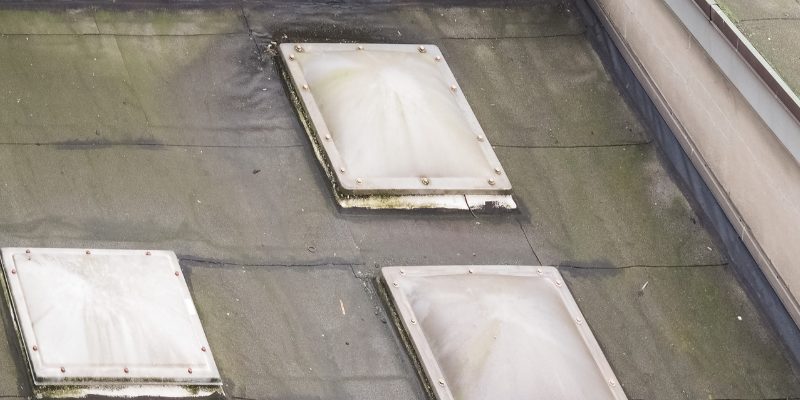Connect Now: 516-273-6428
How Does Humidity Impact My Roof?

Long Island’s climate is characterized by its high humidity levels, especially during the summer months. From the coastal towns of Montauk and Southampton to the suburban areas of Hempstead and Smithtown, homes across Long Island must endure the effects of humidity. While we often think about humidity in terms of comfort and air quality inside our homes, it’s crucial to understand how it impacts the roof above our heads.
Let’s explore how humidity affects your roof, the signs of humidity-related damage, and how to protect your roof from these effects.
The Effects of Humidity on Your Roof
Moisture Absorption and Retention
High humidity levels mean there is a lot of moisture in the air, which can be absorbed by your roof:
Shingle Deterioration
Asphalt shingles can absorb moisture, causing them to warp, blister, or become more brittle over time.
Wood Rot
Wooden elements of the roof structure, such as rafters or decking, can absorb moisture and start to rot, compromising the structural integrity of the roof.
Mold and Mildew Growth
Excessive moisture from high humidity creates an ideal environment for mold and mildew:
Health Hazards
Mold and mildew growth can lead to health issues for the occupants, including respiratory problems and allergies.
Aesthetic Damage
Mold can cause dark stains and discoloration on the roof and siding, affecting your home’s curb appeal.
Algae and Moss Proliferation
Humid conditions can also promote the growth of algae and moss on your roof:
Algae
Often seen as black streaks on the roof, algae can degrade the appearance of your shingles and reduce their reflectivity, leading to higher cooling costs.
Moss
Moss retains moisture, which can weaken the roof material and increase the risk of leaks. It can also lift shingles, creating gaps where water can enter.
Rust and Corrosion
Metal components of your roof, such as flashing, nails, and gutters, are susceptible to rust and corrosion in high humidity:
Weakened Structure
Corroded metal can weaken the roof’s structural elements, leading to potential failure.
Increased Maintenance
Rust and corrosion require regular inspection and maintenance to prevent further damage.
Insulation and Ventilation Issues
Humidity can impact the effectiveness of your roof’s insulation and ventilation systems:
Reduced Insulation Efficiency
Moisture can reduce the insulating properties of materials, leading to higher energy costs as your HVAC system works harder to maintain a comfortable temperature.
Ventilation Problems
Poor ventilation can trap humid air in the attic, exacerbating moisture problems and leading to further damage to the roof structure.
Signs of Humidity-Related Roof Damage
Identifying the signs of humidity-related damage early can help prevent more extensive and costly repairs:
Discolored or Stained Shingles
Look for dark streaks or patches on your shingles, which can indicate algae growth or moisture absorption.
Moss or Mold Growth
Visible moss or mold on the roof surface or in the attic is a clear sign of excessive moisture.
Peeling or Blistering Paint
Exterior paint that is peeling or blistering, particularly near the roofline, can indicate that moisture is seeping into the structure.
Rusting Metal Components
Check for rust or corrosion on metal parts like flashing, nails, or gutters.
Musty Odors in the Attic
A musty smell in the attic is often a sign of mold or mildew growth due to high humidity.
Sagging or Warped Roof Structure
If parts of the roof structure appear to be sagging or warping, this could be due to moisture damage compromising the integrity of the materials.
How to Protect Your Roof from Humidity Damage
Ensure Proper Ventilation
Proper ventilation is crucial to managing humidity levels in your roof space:
Install Ridge and Soffit Vents
These vents promote airflow through the attic, reducing humidity and temperature levels.
Use Attic Fans
Attic fans can help to expel hot, humid air from the attic, particularly during the summer.
Improve Insulation
Good insulation helps to keep moisture levels in check:
Inspect and Upgrade Insulation
Check your attic insulation regularly and upgrade it if necessary to prevent moisture buildup.
Use Vapor Barriers
Install vapor barriers to reduce the amount of moisture that can penetrate into the roof structure.
Regular Roof Inspections
Frequent inspections can help you catch and address issues early:
Bi-Annual Inspections
Have your roof inspected at least twice a year, in the spring and fall, to catch any seasonal damage and prepare for upcoming weather conditions.
Post-Storm Checks
Inspect your roof after severe weather events, such as heavy rain or hurricanes, to ensure no damage has occurred.
Prompt Repairs
Address any signs of damage immediately to prevent them from worsening:
Fix Leaks Quickly
Repair any leaks as soon as they are discovered to prevent water damage and mold growth.
Replace Damaged Shingles
Swap out any warped, blistered, or cracked shingles to maintain the roof’s integrity.
Choose Moisture-Resistant Materials
Consider using materials that are less susceptible to moisture damage:
Algae-Resistant Shingles
These shingles are treated to resist algae growth, keeping your roof cleaner and more durable.
Metal Roofing
Metal roofs are more resistant to moisture damage and can provide better protection against high humidity.
Keep Your Roof Clean
Regular cleaning helps to remove moisture-retaining debris:
Clear Debris
Remove leaves, branches, and other debris that can trap moisture on your roof.
Clean Gutters
Keep your gutters clean to ensure proper water drainage away from your roof and foundation.
Trim Overhanging Trees
Trees can contribute to moisture problems by shading the roof and dropping debris:
Trim Branches
Keep trees trimmed back to reduce shading and the amount of debris that falls on your roof.
Maintain Clearance
Ensure there is enough clearance between tree branches and your roof to prevent physical damage and moss growth.
Address:
11 Katie Ct, Lake Grove, NY 11755
Phone Number:
516-273-6428

Hours of Operation
Mon – Fri 8:00am – 8:00pm
Sat – Sun 8:00am – 6:00pm
